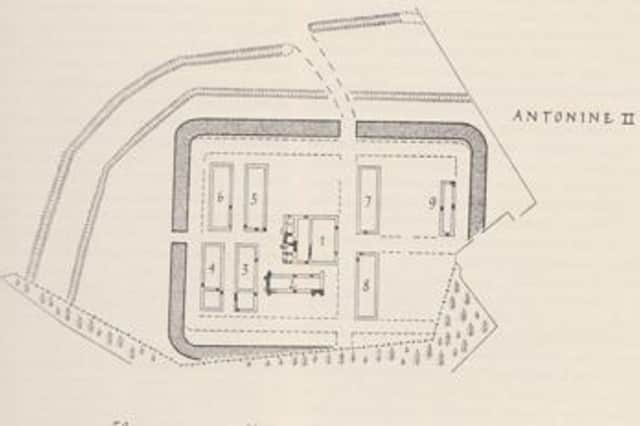Clydesdale's wild bunch gave Romans a hard time


Biggar Archaeological Group found evidence for the hunters and food gatherers of this period at Camps reservoir in the form of stone tools and discarded hazelnut shells.
In Neolithic times, there is plenty of evidence of man’s presence in the area, the most interesting being a henge monument at Normangill. The road to Camps bisects this site which, at one time, was used by our remote ancestors to worship both the sun and the moon.
Advertisement
Hide AdAdvertisement
Hide AdThe Bronze Age saw the appearance of a settlement on the side of a hill at Normangill Wood. The houses are cut into the hillside and the remains constitute the best preserved village of its sort anywhere in southern Scotland. The houses date back to about 1000-800 BC.
Iron Age forts are also to be found in the vicinity of Crawford, the best preserved being the forts of Ritchie Ferry and Arbory Hill. These were probably still in use when the Roman legions marched into Clydesdale in 79 AD. Both would have demanded some effort to capture.
The Romans appreciated the strategic value of having a fort at Crawford, guarding the main route from Carlisle to Scotland. Prior to building the permanent camp, a marching camp was first constructed. It lies across the Clyde and was discovered by aerial photography back in the 1930s by Dr St Joseph.
The people who lived in the area were called the Damnonii – a translation from Latin into English reveals they were referred to as the ‘Wild Bunch.’ No doubt they gave the Romans a hard time!
Advertisement
Hide AdAdvertisement
Hide AdThe Roman fort at Crawford has been excavated and the results show that there was a mixture of barracks and stables, with the headquarters building and two granaries flanking it.
This was abandoned around 100 AD when Trajan withdrew troops to fight the Dacians in Bulgaria. Reoccupied in the time of Hadrian, the troops serving here were probably auxiliary cavalrymen who patrolled the road from Moffat to Crawford.
Evidence points to the fort being abandoned about the time of the Emperor Commodus around 180 AD.